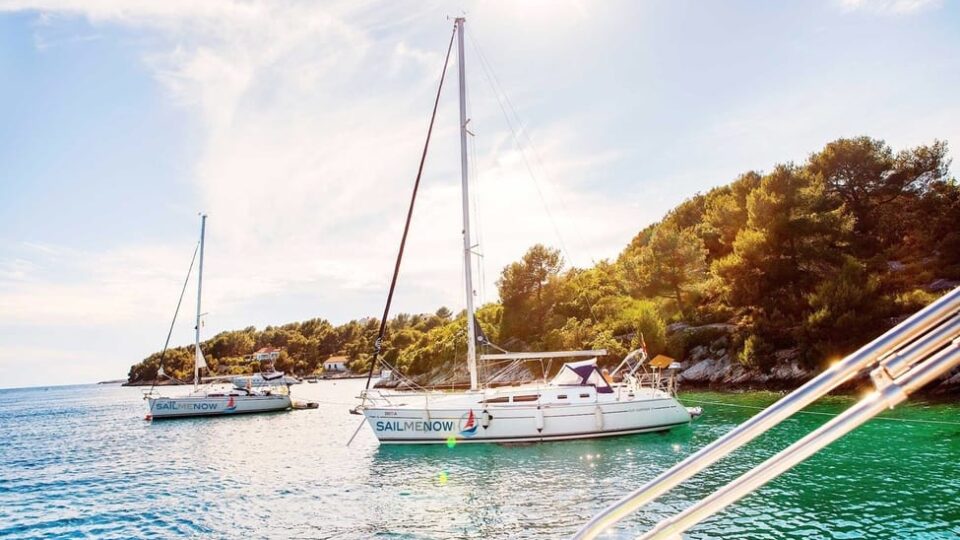Best Sailing Destinations in Croatia
Sailing is great on the Adriatic Sea, which is one of the most serene and transparent in the Mediterranean. Croatia’s coastline is 6278 kilometers long, with 1244 islands, islets, rocks, and reefs. There are also hundreds of year-round wet and dry berths in modern marinas. You have countless choices there! Sail from island to island in the Kornati archipelago or anchor in coves or natural shelters. You can also dive in Pakleni Otoci, visit Croatia’s most remote island, Palagruza, and dock at the spectacular Elaphiti Islands. The country is rich in natural resources, with roughly 2000 kilometers of rocky coastline. Note that many of the Croatian islands have plenty of lush vegetation. So, in this article, I’m going to list the best sailing destinations in Croatia in order for you to choose one or all of them!
Main Regions of Croatia
Croatia consists of five regions: Central Croatia (Zagreb), Highland Croatia (Gospic), Eastern Croatia – Slavonia (Osijek, Pozega), Northern Littoral – Istria (Pula, Rijeka), and Southern Littoral – Dalmatia (Dubrovnik, Split, Zadar). The current regional divisions are based on the country’s relief division.
Central Croatia includes the borderlands of the Pannonian Plain. It also includes the peri-Pannonian districts of Hrvatsko Zagorje, Medimurje, Pokuplje, and Banovina. Zagreb is the country’s population and economic hub, as well as its capital. Large towns and regional centers in the north include Varazdin, Cakovec, and Krapina. In the south, Karlovac and Sisak, and in the east, Bjelovar and Koprivnica.
Highland Croatia is the country’s smallest and least populated region, with mountainous terrain. Gorski Kotar, the Ogulin–Plaski depression, and Lika, all of which are forest regions, make up the smaller units.
Croatia’s northern, largely lowland territory is divided between Eastern and Central Croatia. The three major rivers, the Sava, Drava, and Danube, divide the traditional lands of Slavonia, Baranja. And, the western portion of Srijem which is the actual lowland territory of the Pannonian Plain. The regional capital is Osijek, a port on the Drava. Vukovar, the country’s principal river port and the only Danube port are all located in Vinkovci.
The historical territory of Dalmatia mostly comprises the southern littoral. The region has three parallel belts which are the islands, the coast, and the hinterland. It is a characteristically Mediterranean territory in terms of climate, environment, and culture. The regional center is Split, Croatia’s second-biggest city and the largest on the coast. Zadar, Sibenik, and Dubrovnik on the coast, as well as Knin and Sinj in the interior, are important regional and economic centers.
Traditionally, the country’s coastal region has been divided into two parts: north and south. Istria, Croatia’s most developed tourist region, as well as the long Kvarner region and the nearby islands, make up the Hrvatsko Primorje (Croatian littoral). The principal city and regional center is Rijeka, Croatia’s largest harbor. Other notable cities include Pula and Porec in Istria, as well as Senj in the coastal area below Velebit. The islands of Krk, Rab, and Mali Losinj, as well as Rovinj and Opatija, are well-known islands in the region.
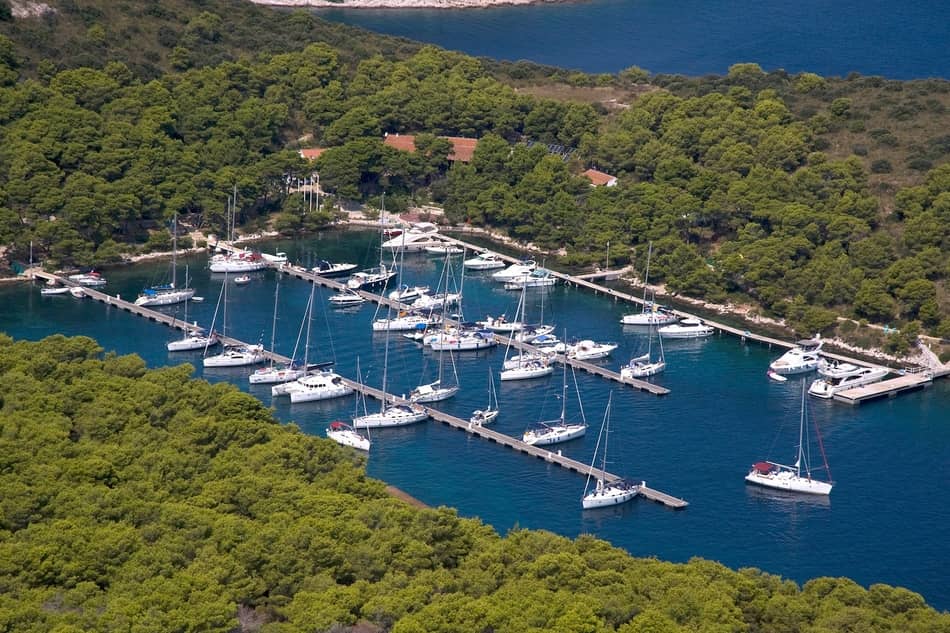
>>Also Read: Best Sailing Routes in Croatia
Split
Aspalatos, Spalatum, and Spljet, during Ancient Greece times, or Split as we know it nowadays. Split is Croatia’s second-largest city and the center of the Dalmatia region. The historic town is on a sheltered harbor on the south side of a steep peninsula. It is greatly protected from the open sea by numerous islets. The entire west end of the peninsula is a massive wooded mountain park. The shipyards, limestone quarries, and the commercial/military port are all located on the peninsula’s north side. The landscape includes high coastal mountains set against the blue Adriatic Sea.
The city itself is hundreds of years old, with the 4th-century Diocletian’s Palace, now a UNESCO World Heritage Site, at its heart. Split’s small streets and charming structures remind us that the city is mostly for people and horses. Nowadays, street performers add to the city’s attractiveness. Before sailing sail, it’s the ideal spot to learn about Croatia’s culture and history. Lastly, Split is a great starting point for sailing in the Adriatic from where you can reach islands like Vis, Hvar, and Korcula.
Dubrovnik
Dubrovnik was once known as Ragusa and dates back to the 7th century. Strolling around the historic Old Town which is enclosed by medieval stone walls, is a must when visiting the city. Lord Byron coined the phrase “Pearl of the Adriatic,” which has persisted ever since. Many tourists have been in recent years to see the filming locations for Game of Thrones. And, to stroll atop the defense walls for breathtaking views of the turquoise sea and the old town center. Note that there are no free anchoring or mooring buoys, and the small port is out of order. However, there are two marinas nearby, ACI Marina Dubrovnik and Marina Frapa, that provide all of the necessary services.
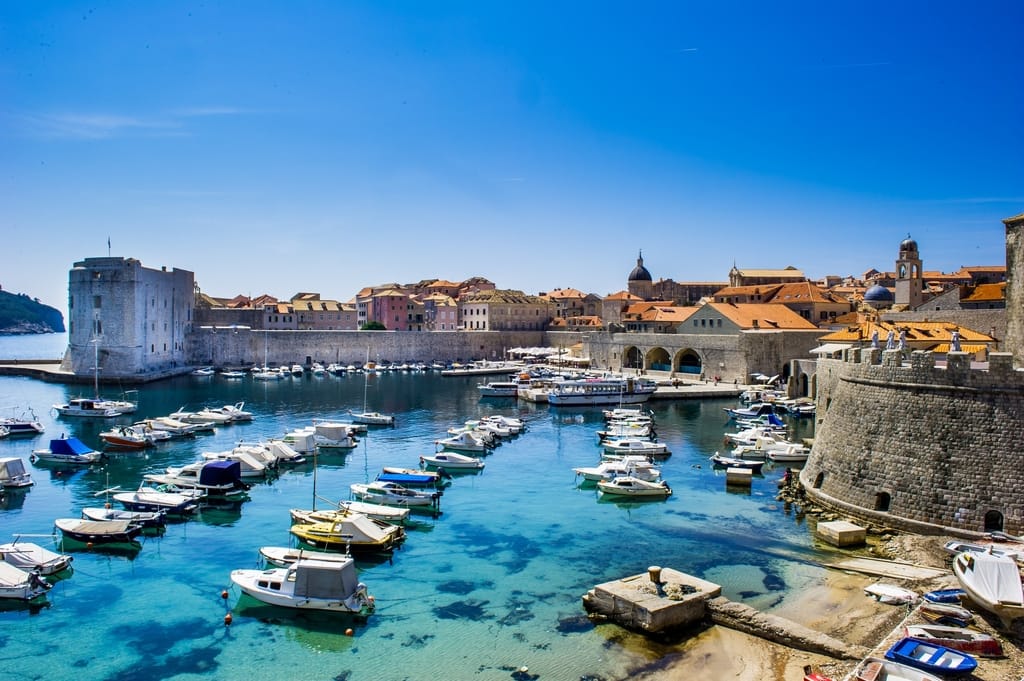
The Kornati Islands
The Kornati Archipelago has 140 islands and islets. They are separated into two groups geographically: Gornji Kornati (Upper Kornati) and Donji Kornati (Lower Kornati). Gornji Kornati are closer to the mainland and include Zut Island, Sit Island, and the adjacent islets. Donji Kornati are more open to the SW and include the island of Kornat, Piskera, and numerous more islands. The islands of Donji Kornati are part of the Kornati National Park. The Kornati Archipelago is located approximately 7NM from Murter Island, and approximately 15 nautical miles from Sibenik and Zadar. Note that in most of the islands there is no human presence.
Note that you can sail around the Kornati National Park except in the zones of strict protection. These areas are around Purara islet, Klint and Volic reefs, Mrtenjak islet, Kolobucar islet, and Obrucan islets. You can moor in the ACI Marina Zut and ACI Marina Piskera.
Lavsa Island – Kornati Archipelago
Lavsa Island, also known as the “crown of Croatian islands,” is a deserted island in Kornati National Park. Note that all charter companies will require a ticket to access and enjoy the protected park and its underwater life. It includes access to its mooring buoys as well as the nearby Telascica Nature Park to the north. The island is small, but it has a lovely hidden cove where you may spend the night. There’s also a fantastic restaurant with a menu of delectable fish dishes. If you’re a diver, contact one of the local dive centers to learn about the protected area’s marine life.
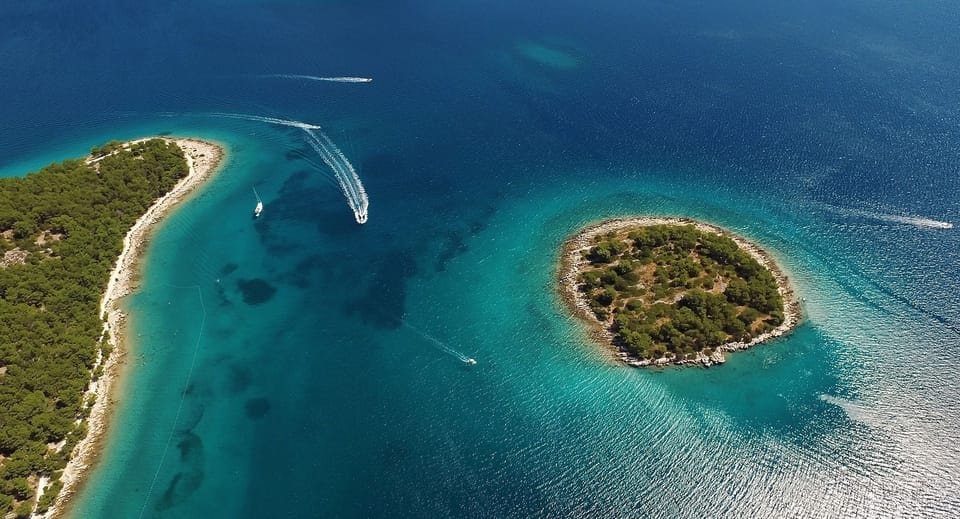
>>Also Read: Best Sailing Destinations in Europe
Brac Island – Dalmatia Region
The largest of the Croatian islands, Brac is home to the picturesque Milna town and the quiet Lucice bay. The bay has many mooring buoys, albeit you will have to pay a fee for renting a buoy. While it is possible to anchor in a nearby bay, you will be more exposed to the elements. It’s worth finding a spot to relax and take in the scenery, which includes crystal-clear blue waters and lush pines whose aromatic perfume wafts through the air. For Milna, it’s a 30-minute trip that’ll take you through old-world Mediterranean charm and fantastic local eateries serving real Dalmatian cuisine, including plenty of fresh fish.
Palagruza Archipelago
The most remote islands in the Adriatic Sea are the Palagruza Islands. So, if you’re looking for an adventure set your course for Palagruza, one of Croatia’s least visited islands. It’s midway between mainland Croatia and Italy, so getting there takes a long sail. When you see Palagruza’s lighthouse atop high rocks thrusting up from the azure sea, you’ll know you’ve arrived. However, you have to be cautious if you visit the Palagruza Islands. Navigation is difficult because of the winds, tides, and shallows. If you check the weather beforehand, you’ll enjoy a breathtaking landscape. The towering white cliffs have rich flora overhead, while beneath the surface you can enjoy some of Croatia’s best scuba diving.
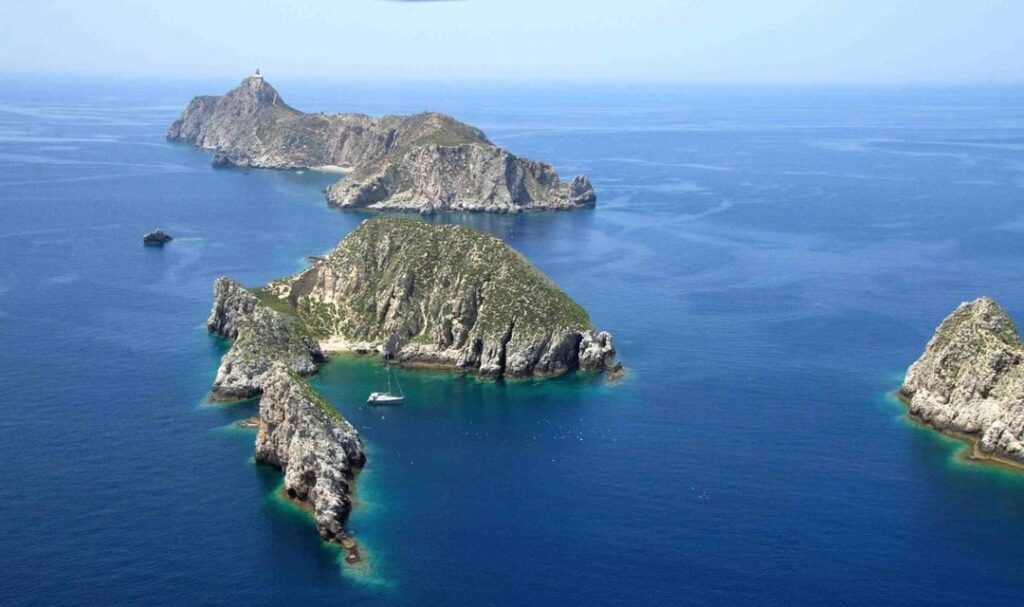
>>Also Read: Best Sailing Locations in the Med
Lastovo Island – Central Dalmatia
Thick forests, rocky coast, and hiking trails are the island’s main characteristics. Only 800 people live on this lonely archipelago of 46 islets, which is Croatia’s most remote group of islands. It’s off the usual path, so only come here if you want to be awestruck by fjord-like formations, endemic plants, and animals found nowhere else. Despite its remote location, Lastovo is a popular vacation spot for Croatians, who visit the islands during the summer for festivals honoring the night sky.
Solta Island – Split
The island of Solta is a great sailing location located near the cities of Split and Trogir. Solta is rich in Illyrian mythology, medieval poetry, rich maritime culture, and a center of oenology and Mediterranean culinary specialties. Sesula bay in Solta is famous for its tranquil ambiance and is a perfect spot for anchoring. From here, take a stroll to Maslinica, a small medieval town with postcard-perfect views, lovely beaches, colorful sunsets, and stores selling locally created things like wine, honey, and schnapps.
Charter yachts in Croatia, with flexible itineraries and offering a variety of yachts to choose from, are a great way to explore Split and over 1000 islands. You can stop at different ports, islands, and beaches along the way, and such yachts often include meal plans and other amenities in their packages. Chartering a yacht is also a great way to meet new people and make friends while enjoying the sights and sounds of Croatia.
Dugi Otok – Zadar
Dugi Otok, about 30 kilometers off the coast of Zadar, is the “long island” because of its long, slender shape. The entire island is stunning, but Telascica National Park on the island’s southern tip is possibly the most breathtaking. For an out-of-this-world view, anchor in a nearby cove and walk to Telascica’s spectacular salt lake. Then return to the island’s western side, where the cliffs are ideal for dramatic cliff leaping. Sakarun Beach, on the north side of Dugi Otok, is a must-see. One of Croatia’s most well-known beaches is this expanse of sand. Sakarun beach’s water is also exceedingly shallow, only 3m deep up to 300m from the coast. Therefore swimming or snorkeling is a must.
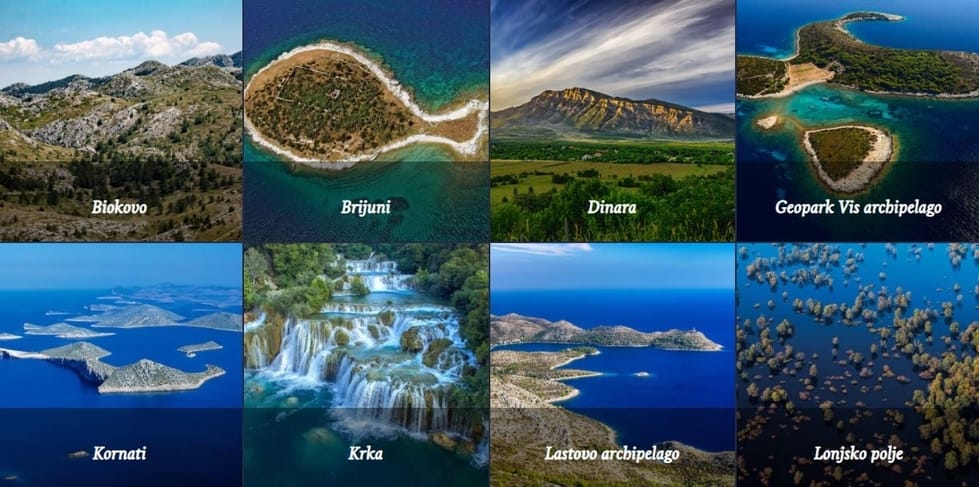
>>Also Read: Best Marinas in Europe
Krka National Park
Krka National Park is nearby the picturesque town of Skradin, which is, along with Sibenik, the best starting point for exploring the park. Skradin is famous for its lovely cobblestone alleys and Venetian architecture. It’s a popular entrance to Krka National Park, situated at the park’s river entrance. This makes it simple to explore Skradinski Buk, the Mediterranean’s highest waterfall, and bathe in the tranquil lake at its base. On the other side of the riverbed, there are several mooring buoys. And, anchoring is permitted on the north bank of the river before reaching the marina.
Moreover, with no cars allowed, Zlarin Island is located at the mouth of the Krka river. Note that it’s known for harvesting and processing red coral. And, there’s a tiny museum and jewelry shop dedicated to the island’s history. There are several traditional cafes where you can relax and enjoy the local environment. In addition, don’t miss having lunch in the local taverns such as the family-run Ivana. You can pay for mooring buoys or anchor for free. But, you’ll typically find a spot on the wide town quay, which is shielded from most winds, though it may get rather choppy if north-westerly blows.
